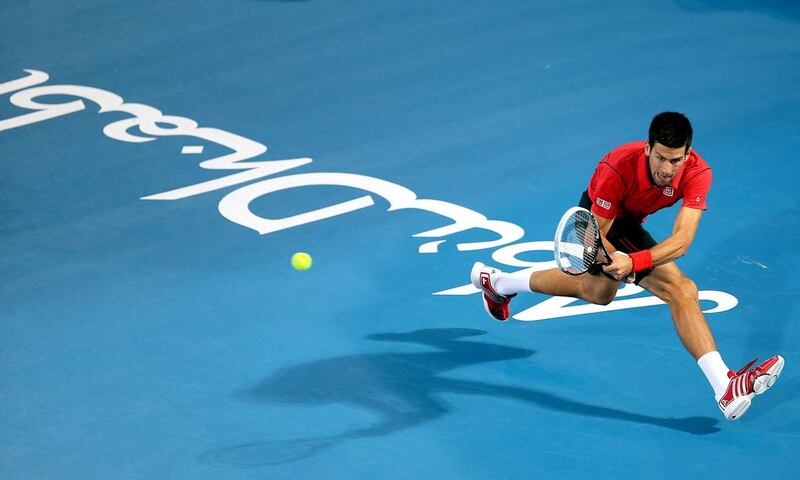Every year, as surely as tennis shoes squeak on a freshly surfaced court, the questions begin once again about the future of the Mubadala World Tennis Championship.
The lyrics have become as familiar as a holiday tune.
When will the tournament expand? Will it become an official ATP event? Will women someday be added?
Tournament organisers politely reaffirm that they have considered every option, all the price points involved, potential scheduling conflicts, weighed the infrastructure issues and myriad other variables, and dutifully presented them to the title sponsors.
So far, little has changed, which might be for the best.
Indeed, let us hear it for the minimalist approach.
Despite nudges from some quarters to broaden the event, the tournament completed its sixth iteration on Saturday night with few systemic tweaks and, for that, it has thrived, not suffered.
Arguably the most professionally staged sports event on the island, the reality is, if the tournament expanded, there is no guarantee it would be anything other than diluted.
The six male players who competed over the weekend all were ranked in the world top 10, and for the first time, the top four were all in the field. The number of ATP events that can make that claim are few.
“Now the people know about the competition,” world No 10 Jo-Wilfried Tsonga said. “This is the only competition outside the ATP to have five or six guys from the top 10, which is just incredible.”
In other words, the elite players want to be here, both for the competition it provides ahead of the first major, the Australian Open in two weeks, and the other event inducements and amenities.
If the field were beefed up in any significant amount, it would outgrow the Zayed Sports City facility, which does not have a secondary court capable of handling a crowd in excess of perhaps 300.
A bigger concern is that there is no guarantee that the same players would show up. As it stands, the six men who appear are assured of at least two pre-season matches against players they are likely to face over and over in the semi-finals and finals of the season to follow.
Wild cards, qualifiers and political appointees are for the other tournaments.
Tsonga, for instance, played Andy Murray, Novak Djokovic and Rafael Nadal on successive days – all ranked in the world top four. Not a bad pre-season primer.
Nadal endorsed giving the event an official stamp of approval, though that process is usually more complicated than it sounds. The tournament would surely lose some organisational autonomy to the ATP.
“I really hope that’s an option,” Nadal said of potentially becoming a sanctioned ATP event. “Abu Dhabi is a place that is all the time getting better and better.”
So why derail a good thing by adding more freight to the train? The money currently expended by sponsors to attract top-flight players would likely be folded into the purse, which lessens the chance of drawing the best players across the board.
Mid-sized ATP events would celebrate having Abu Dhabi’s player line-up. For instance, the ATP opens its season this week with events in two locales. The tournament in Brisbane has one player from the world top 10, while Qatar has five – combined, that is the same number that just breezed through the UAE.
Moreover, the Mubadala tournament, played in a 5,000-seat venue, is an ideal mix of big-league bombast and intimacy, where kids collect autographs and play in daily clinics alongside the best players in the game, players who might not be predisposed to stand around posing for dozens of photos if it were an official event with a bundle of ranking points and prize money on offer.
The underlying inference is that since it is an exhibition, those no longer eligible for the winner-take-all US$250,000 (Dh918,300) prize lose their edge. Some players take the week more seriously than others, but they are all here for a reason – to ramp it up for the new season.
To the repeat invitees, the Mubadala has become the de facto opener. The world No 2 Novak Djokovic, who won his third straight Mubadala title on Saturday night, is not playing again until the Australian Open.
“It’s not an ATP tournament, but everybody wants to play well and start with a positive tournament,” Nadal said before his opening match. “It will be a 100 per cent real test.”
What we know for certain is this: the 2014 event will actually happen in 2015, January 1 to 3, to be exact.
selling@thenational.ae





